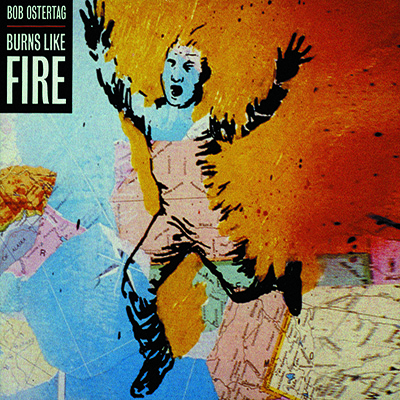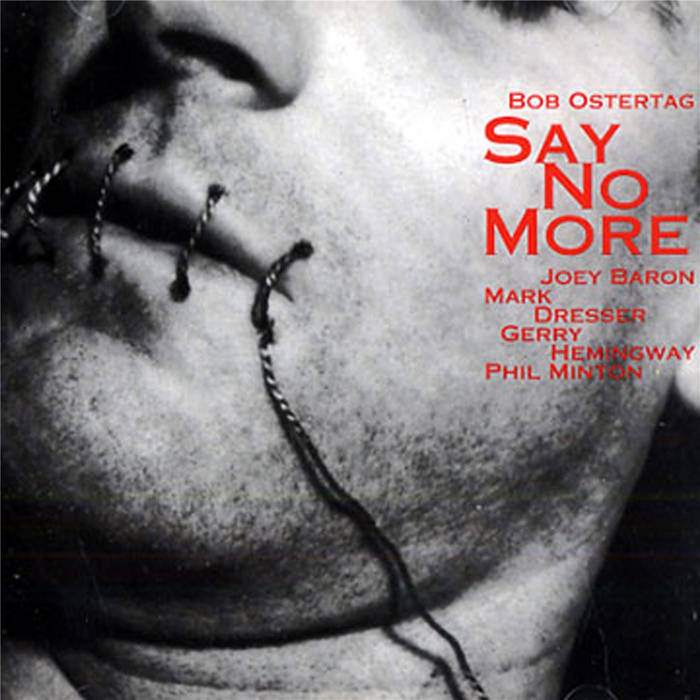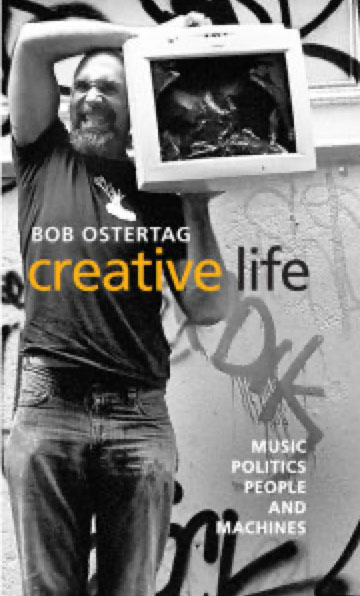Spiral

World premiere performance, Cowell Theater, San Francisco. 1996.
The following text is from the book Creative Life: Music, Politics, People, and Machines, by Bob Ostertag. Published in 2009.
In the early 1990s I became obsessed by the work of David Wojnarowicz. David’s life was not an easy one. From a violent home in New Jersey, he dropped out of high school and hustled on the streets of Manhattan, which he used as a most unusual art school. He wanted to be a photographer, but though he managed to steal a camera, and regularly steal film, he could not steal film developing. After shooting a roll, David would store his undeveloped film in a bus station locker. But as is always true for people living on the streets, the precariousness of his life situation made it difficult to follow a schedule, and the day would always come when he would not make it back to the bus station in time and his possessions would be cleared from the locker. Thus neither David nor anyone else ever saw most of his pictures.
I found David too late. I asked him if he would write and read a text for my composition All the Rage. He agreed, though he was too sick to create new work. Over many weeks we talked on the phone, waiting for a window in which his health would improve to where he could take on a new project. It never did. He died on July 22, 1992.
Before getting so sick he had managed to make several movies, write three books, and make numerous pieces of visual and performance art. He covered entire walls of the West Side piers with paintings of extinct animals (the same piers frequented by Jim Magee). His collage work is arresting, and I have used it on three CD covers.



His writing about his sexual experiences is deeply erotic. His writing about AIDS captures the anger of the early epidemic in a way no other writer did. I am not the only one who feels this way. News of his death triggered a spontaneous march through the streets of Manhattan’s East Village.
In 1996 I was commissioned to create a piece for the What About AIDS? art exhibit, a large show which traveled around the country featuring art by people who had somehow been affected by the AIDS epidemic. Not long before his death David had written a text describing his experience of the dying process that was stunning in its power and immediacy, and I decided to build my piece upon this text.
David wrote of feeling that he was turning into glass. I imagined music played entirely on glass instruments, and brought in instrument-builder Oliver DiCicco as a collaborator. Some of the instruments Oliver created were quite simple, such as an untuned glass marimba and glass bullroarers. Others, such as a series of suspended and amplified tuned glass rods, were beautiful sculptures which could be played. And one, a glass harp, was a full-fledged musical instrument. The harp consisted of two wooden frames which opened like a book. Glass rods were suspended in the frames from two piano wires each. Both the rods and the wires were tuned. Thus one could play the glass and use the wires as resonators, or play the wires and use the glass as resonators. Still other instruments were fashioned by myself out of “off-the-shelf” glass: crystal wine glass one could bow with a finger, a crystal bowl filled with glass marbles that one could rotate or shake, amplified sheets of glass, and plates of glass suspended over cardboard tubes which doubled as drums and as resonant surfaces on which to amplify other objects. I also used a glass mortar and pestle that Bo Houston, a close friend and novelist, had used to mix the substance he ingested to take his own life when he arrived at the end of his long battle with AIDS.
Experimenting with using amplified sheets of suspended plate glass gave me the idea of using them not only as amplified percussion instruments but as projection surfaces as well. I brought in another friend, Pierre Hébert, who at the time was making animations by scratching on black film stock with a knife. Pierre’s images are literally empty pieces of light carved into dark space, giving them an eerie affinity with David’s text. We projected Pierre’s images suspended on sheets of amplified glass, as singing percussionists played the glass with mallets.
Every time Spiral was performed, I experimented with a different line-up. Percussionist Gerry Hemingway and technical director Richard Board were always there, along with some combination of Oliver DiCicco, Stefano Scodanibbio, Trevor Dunn, William Winant, and Raz Kennedy.
But ultimately there were very few performances. On the way back to San Francisco from a concert in Brussels, United Airlines lost the instruments. When the cases finally showed up days later, they had been dropped so forcefully that the glass rods inside had not merely broken but shattered into glass dust.
That was effectively the end of Spiral, though I am not sure this is such a bad thing. The destruction of the glass was poetic, the perfect end actually. The music was never recorded. All that is left is some dust, some photos, and some memories. I think of Spiral less as a musical composition than as a ritual in which I engaged to mark David’s passing, and the darkest time of the epidemic in this country.
SPIRAL
by David Wojnarowicz
Sometimes I come to hate people because they can’t see where I am. I’ve gone empty. Completely empty and all they see is the visual form: my arms and legs, my face, my height and posture, the sounds that come from my throat. But I’m fucking empty.
The person I was just one year ago no longer exists; drifts spinning slowly into the ether somewhere way back there. I’m a Xerox of my former self. I can’t abstract my own dying any longer. I am a stranger to others and to myself and I refuse to pretend that I am familiar or that I have history attached to my heels. I am glass, clear empty glass.
I see the world spinning behind and through me. I see casualness and mundane effects of gesture made by constant populations. I look familiar but I am a complete stranger being mistaken for my former selves.
I am a stranger and I am moving. I am moving on two legs soon to be on all fours. I am no longer animal vegetable or mineral. I am no longer made of circuits or disks. I am no longer coded and deciphered. I am all emptiness and futility. I am an empty stranger, a carbon copy of my
form.
I can no longer find what I’m looking for outside of myself. It doesn’t exist out there. Maybe it’s only in here, inside my head. But my head is glass and my eyes have stopped being cameras, the tape has run out and nobody’s words can touch me. No gesture can touch me. I’ve been dropped into all this from another world and I can’t speak your language any longer.
See the signs I try to make with my hands and fingers. See the vague movements of my lips among the sheets. I’m a blank spot in a hectic civilization. I’m a dark smudge in the air that dissipates without notice. I feel like a window, maybe a broken window. I am a glass human. I am a glass human disappearing in the rain.
I am standing among all of you waving my invisible arms and hands. I am shouting my invisible words. I am getting so weary. I am growing so tired. I am waving to you from here. I am crawling around looking for the aperture of complete and final emptiness. I am vibrating in isolation among you. I am screaming but it comes out like pieces of clear ice. I am signaling that the volume of all this is too high. I am waving. I am waving my hands. I am disappearing. I am disappearing but not fast enough.
Used by permission of the estate of David Wojnarowicz

Glass harp by Oliver DiCicco

Glass rod instruments by Oliver DiCicco

World premiere performance, Cowell Theater, San Francisco. 1996.

World premiere performance, Cowell Theater, San Francisco. 1996.

Animation by Pierre Hébert
